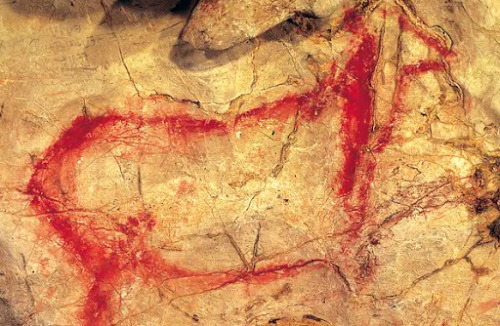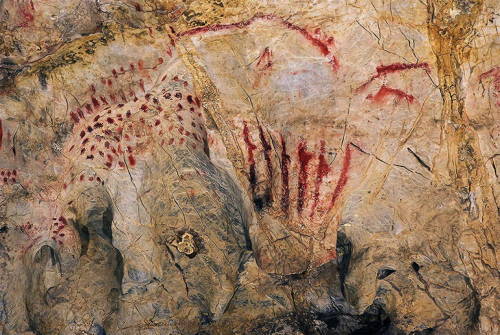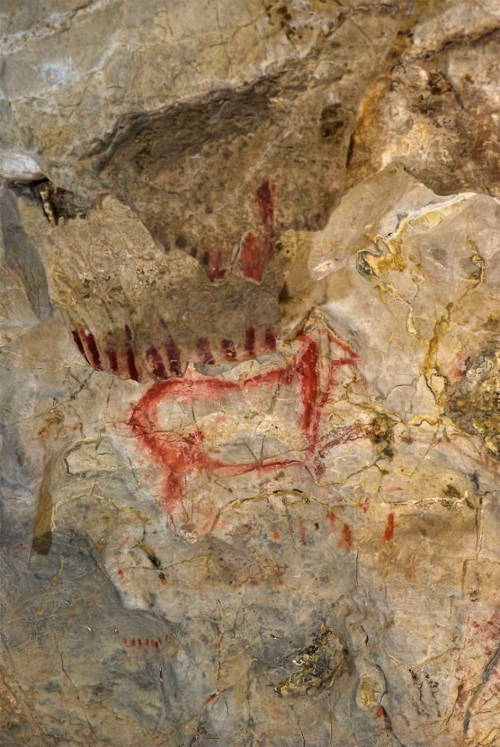The Elephant In LoveThe El Pindal cave is located in Asturias, Spain and contains about 20 paleolith
The Elephant In LoveThe El Pindal cave is located in Asturias, Spain and contains about 20 paleolithic artworks. The paintings inside this cave are a bit older than the Rouffignac cave, they are dated back to two periods during the paleolithic: 22,000 years ago and 17,000 years ago. What makes this cave especially special is the presence of quite a unique depiction of a woolly mammoth, that is how the cave earned its Spanish nickname ‘Elefante Enamorado’, the elephant in love. The paintings inside this cave were discovered in 1908 by a local archeologist named Hermilio Alcade del Rio. The cave itself is about 600 meters long in length, the first 300 meters is opened up for visitors. Even though the paintings were discovered in 1908, only recent research has revealed the age of the works. Unfortunately not all of the 20 cave paintings are visible to the naked eye. The El Pindal cave has deteriorated quite a bit throughout the centuries due to climate changes. The paintings that are still visible show the images of horses, a salmon, a red deer, abstract symbols, a bison and the most notable of them all, a woolly mammoth with a shape inside of it that looks like a heart. The appearance of a mammoth painting came as quite the surprise to researchers as depictions of mammoths are very rare in modern day Spain. It is thought that early modern humans in modern day Spain viewed the wild horse as a more sacred animal than the mammoth, while in modern day France the mammoth seemed to have been the most important spiritual animal.Of course we can not know the exact reason why there is a heart-shaped figure inside the mammoth painting. It is also unknown and doubtful if early humans used the same symbol for a heart as we do today. Even though it is tempting to believe that this mammoth was drawn by people who adored the animal, it is more likely that this is actually a depiction of a wounded woolly mammoth. Interestingly, the cave doesn’t contain any traces of habitation so it seems that early humans have used this cave solely for religious reasons. What kind of ritual would have involved drawing a mammoth with this strange heart-shaped symbol? Was it perhaps drawn by a hunter hoping for an easy hunt? Or was our first assumption right after all and an early human drew this mammoth as a symbol of endearment? We will never know..Here are photos of:The cave art and entrance of the El Pindal cave. -- source link
Tumblr Blog : prehistoriceurope.tumblr.com
#cave art#prehistoric#europe#paleolithic#woolly mammoth




